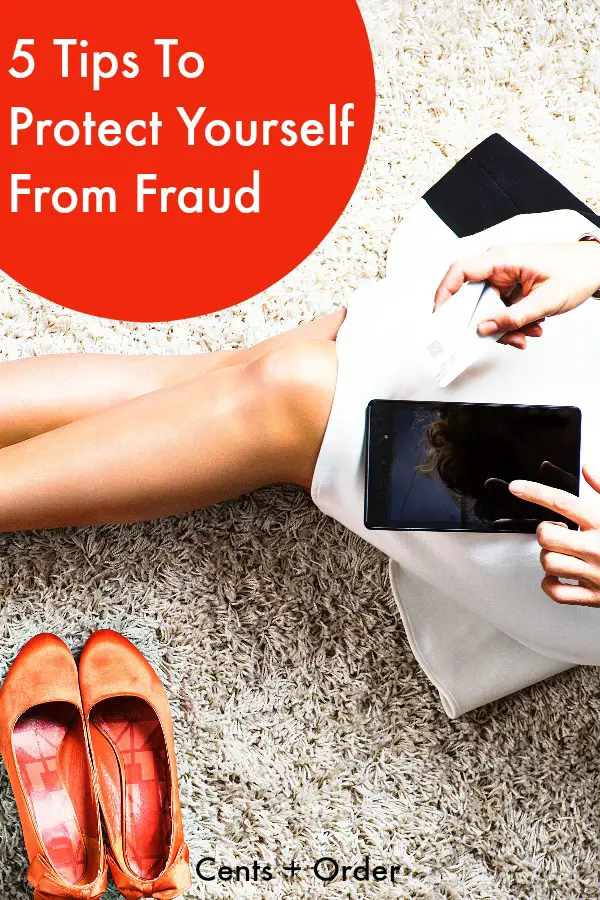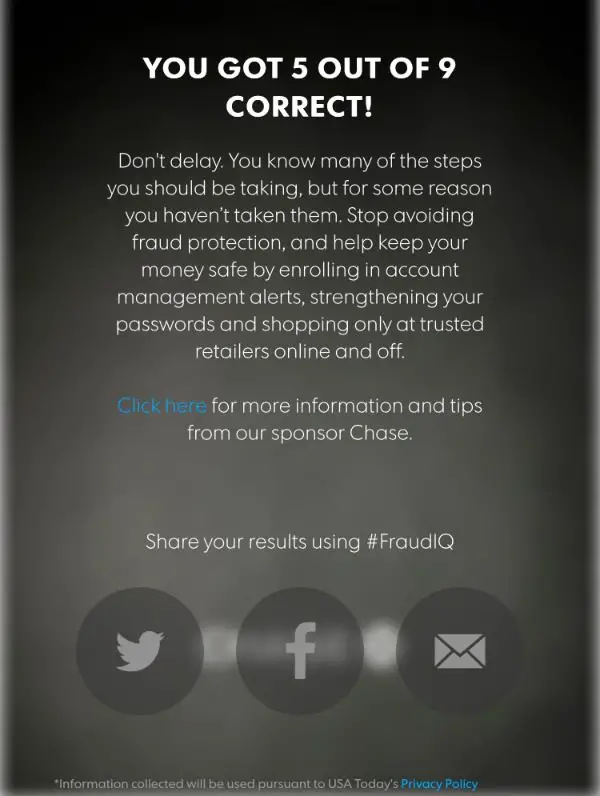This post brought to you by Chase. The content and opinions expressed below are that of Cents and Order.

Anyone can become a victim of fraud at any time. Maybe you’ve lost a credit card. Maybe you’ve seen a suspicious email asking for your personal information. Or maybe a friend or family member has been a victim of identity theft. Avoid becoming a victim when you take steps to help protect yourself against fraud.
Table of Contents
Educate yourself about ways to fight fraud
After having worked 10+ years in the financial field, I’ve seen many ways consumers are vulnerable to fraud. I’ll admit, in some ways I probably overdo when it comes to protecting myself from fraud (like when my shredder overheats from overuse)! Regardless of what you are currently doing to protect yourself against fraud, there are always additional precautions you can take. Plus, criminals are continually evolving and finding new ways to commit fraud. What do you know about fraud protection? Click here to take the “What’s My Fraud IQ?” Quiz.
How did you score?

I only got a 5 out of 9! And it’s not because I don’t know about fraud, but because I don’t always have fraud protection in the forefront of my mind.
5 tips to help protect yourself from fraud
1. Keep your contact info up to date.
Has your home, work, or cell phone number changed recently? What about your home address? Make sure to update this information with your bank and credit card companies. If there’s a questionable transaction on one of your accounts, you want your bank to be able to contact you.
2. Utilize account alerts to monitor activity.
You should monitor your bank accounts and credit card accounts regularly. Many banks allow you to set up alert notifications for certain types of activity. With Chase, you can get notifications by call, text or email. Get alerted when your balance is low, certain types of transactions occur, or even when a large transaction posts to your account. For example, I use account alerts to notify me when my checking account balance is below a specified amount or if there is a purchase over a certain dollar amount.
3. Review your statements for fraudulent activity.
You should review your account activity on a regular basis. At the bare minimum, you should review your statements when they come in the mail or are available online. If you have electronic access, consider reviewing your activity more often, such as when you are paying bills or balancing your checkbook. There are specific timelines to dispute an unauthorized item, so you’ll want to review for fraudulent activity in a timely fashion.
4. Create strong passwords for your online banking.
By now, most of us know better than to make our passwords “password.” But are you creating the best passwords to protect your financial information? Try to use a combination of uppercase letters, lowercase letters, and numbers. If the website allows it, add symbols (like ! @ or #) to create the strongest passwords.
5. Use caution when shopping online.
This is the part of the fraud quiz I failed. I don’t think about the potential for fraud here as much as I should. If you are shopping online, check to make sure the web address is secure–look for https:// (not http://) –before forking over your credit card information. If you are on public Wi-Fi, realize that these networks are often not encrypted. Don’t go shopping online while at your favorite coffee shop (or make sure the site is secure first).
Partner with the right bank for optimal fraud protection
Even if you do everything in your power to protect against fraud, it’s still not enough. You’ll want to choose a bank that is looking out for you too. Much of the potential fraud is stopped way before it ever reaches you. Chances are, at some point, you’ve received a new debit or credit card in the mail as the result of potential fraud. In these cases, your bank or credit card company identified your card number as possibly compromised and sent you a new one to be safe. Chase takes customer security very seriously and has numerous fraud-detection tools in place to help protect customer accounts. To keep your information safe, Chase offers:
- Zero-Liability Protection – You won’t be held responsible for fraudulent charges made with your credit card or account information.
- 24/7 Fraud Monitoring – They use specialized tools to monitor for fraud and may text, email or call you if there is anything unusual on your account.
- Embedded Chip Technology – A chip adds another layer of security to cards when used at a chip card reader. During the chip transaction, the chip produces a single-use code to validate the transaction – further protecting cards from unauthorized use.
In addition, if your credit card is lost or stolen (or your account is compromised due to fraud), Chase will send you a new credit card immediately. And if you happen to be traveling and away from home when the fraud is discovered, Chase will work with you to get any necessary charges authorized. Learn more about the security features and tips from Chase.
Take action to protect yourself from fraud.
Fraud is an ever-changing landscape. Take the time to educate yourself and bring fraud protection to the forefront of your mind. By taking steps to help protect yourself from fraud, you are less likely to be a victim. Partner with a bank that will look out for you with superior fraud protection tools.

